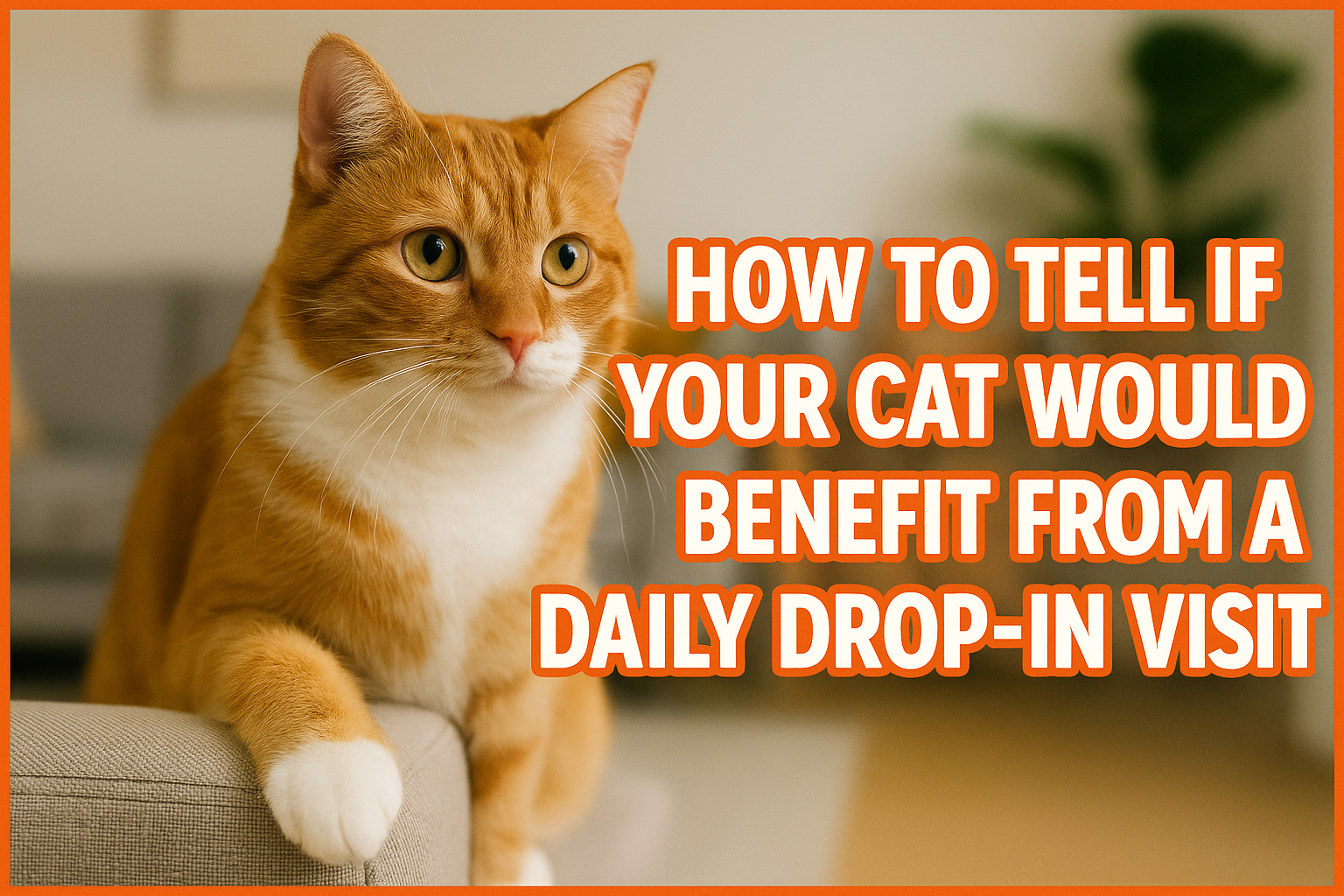Many cat owners believe that cats are perfectly content left alone for long stretches. While cats are independent creatures, leaving them alone for days at a time can lead to stress, loneliness, and even health risks. A daily drop-in visit can provide essential care, enrichment, and peace of mind. Below are key signs, benefits, and tips to help you decide whether your feline friend could use a visit every day.
1. Warning Signs Your Cat May Need a Drop‑In Visit
Here are behaviors and changes that may indicate your cat would benefit from regular interaction:
- Changes in eating or drinking habits: If your cat is skipping meals, eating more, or drinking more (or less), it could signal stress, illness, or dehydration.
- Litter box issues: Accidents, going outside the litter box, or increased urination may mean your cat is uncomfortable, stressed, or struggling with a health concern.
- Reduced grooming or a dull coat: Cats usually self-groom. A neglected coat or matting may reflect stress, age, or underlying health issues.
- Increased vocalization or demanding behavior: Meowing more often or persistently when you return can mean your cat craves interaction.
- Overgrooming or self-harm behaviors: Excessive licking or biting could result from anxiety or boredom.
- Weight fluctuation or sudden weight loss/gain: These are red flags warranting a veterinary check, but also a good reason for ongoing monitoring.
- Clinginess or separation anxiety: If your cat follows you more than usual, gets nervous when you’re packing, or seems clingier, they may not cope well with long absences.
- Destructive behavior or mischief: Knocking over items, scratching furniture, or getting into trouble can be signs of pent-up energy or frustration.
If you notice one or more of these signs, your cat might enjoy—and benefit from—daily drop-in visits. Even a 15–30 minute interaction can make a meaningful difference.
2. Key Benefits of Daily Drop‑In Visits
Introducing daily drop-ins offers advantages beyond basic care:
- Regular health and safety checks: A sitter can detect early signs of illness, ensure your cat has food, water, and that litter is clean.
- Reduced stress and better mental health: Play, affection, and companionship help maintain emotional balance.
- Routine maintenance: Sticking to your cat’s feeding schedule, medication administration, or special care routines keeps things stable.
- Environmental enrichment: Toys, interactive play, puzzle feeders, or gentle stimulation prevent boredom.
- Peace of mind for you: Knowing someone you trust is stopping by regularly can ease worries when you’re away or working long hours.
3. How to Set Up Effective Drop‑In Visits
If you decide to try drop-in visits, here are best practices to make them meaningful and safe:
- Start with a meet-up: Arrange a consultation or meet & greet so your cat can meet the sitter under calm conditions.
- Provide a pet profile: Include your cat’s routine, dietary preferences, allergies, health conditions, and behavioral quirks.
- Make access easy and safe: Leave clear instructions for keys, door codes, or security systems. Give directions to essentials—food, litter, hiding spots.
- Leave enrichment tools: Puzzle feeders, favorite toys, the cat’s safe space or hiding box, and fresh water.
- Give sitters freedom to adapt: Allow flexibility—if your cat wants to nap, let them; if they want play, engage accordingly.
- Ask for updates: Request photos or short notes to stay connected and see how your cat is doing.
4. When Drop‑In Visits Might Be Especially Helpful
Some cats benefit more from consistent human presence than others. Drop-ins can be particularly helpful for:
- Older cats: More frequent visits allow for monitoring mobility, hydration, appetite, or litter box use.
- Cats with medical conditions: Those on medication, recovering from illness, or with chronic issues need oversight.
- Newly adopted or young pets: Transition stress can be reduced with regular human contact.
- Single-cat households: Without another pet’s company, cats may experience more loneliness.
- Cats prone to anxiety or boredom: History of destructive behavior, vocalization, or over-grooming often signals need for engagement.
5. Signs to Monitor Over Time
After introducing drop-ins, keep an eye on ongoing trends:
- Improved regularity in litter box habits
- More consistent appetite
- Brighter coat and better grooming behavior
- Less meowing or attention-seeking when you return
- More relaxed posture and body language
- Better energy levels or playful mood
If positive changes follow your drop-in visits, that’s a good sign they’re adding value to your cat’s life.
Conclusion
Cats may seem self-sufficient, but prolonged solitude can take a toll emotionally and physically. A daily drop-in visit offers more than just feeding and filling a litter box—it brings monitoring, mental stimulation, and human connection. If your cat displays worrying signs, seems restless when you’re away, or simply thrives on interaction, consider starting with a few visits a week and seeing how your cat responds.
 Reviews!
Reviews!

Leave a Reply